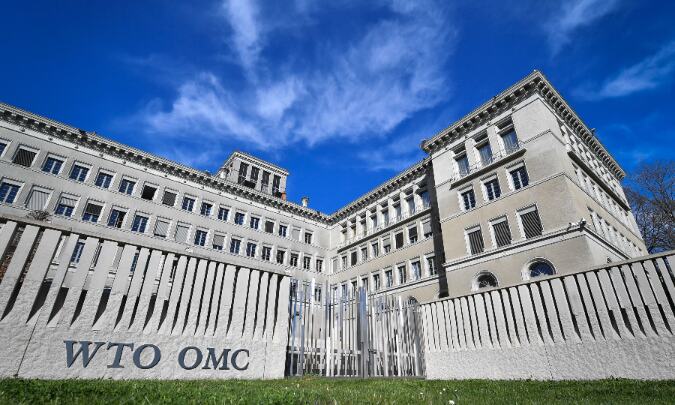Proactive agenda
The pandemic-driven rise in the global digital economy can be leveraged through lock-in of open trade regime and non-imposition of new restrictions

The COVID-19 pandemic has changed — possibly forever — the mode of delivering services in several sectors, as well as substantially transformed goods trade into digital form. A WTO Secretariat report has acknowledged that the enforcement of social distancing, lockdowns and other measures in response to the pandemic has led consumers to ramp up online shopping, social media use, internet telephony and teleconferencing, and streaming of videos and films. This has resulted in spikes in business-to-consumer (B2C) sales and business-to-business (B2B) e-commerce. Suppliers are accelerating efforts to expand their online operations and consumers are adopting new habits that may contribute to a long-term shift towards online services. Increased supply of services through digital networks could increase trade through mode 1 (cross-border supply). A relevant issue is whether this trend is simply market-driven or are there policies to help promote orderly growth and ensure that unnecessary trade barriers by countries do not impede its success.
One such foreseeable limitation has long been preempted through repeated ministerial decisions every two years, starting from 1998, on a moratorium on the imposition of customs duties on electronic transmissions. This will again come up for consideration in the 12th Ministerial Conference of the WTO scheduled to be held in Geneva in November this year. It may, however, be prudent to look simultaneously at other issues that can hinder the cross-border flow of services. Parallel negotiations are underway at the Joint Services Initiative (JSI). The US is also a part of this group which has now expanded to 86 members excluding India. It aims to achieve substantial results by the 12th MC in November this year. Attempts could be made here also to broaden and deepen this moratorium to prevent customs duties and taxation on e-commerce companies/transactions.
Locking in of the prevailing open-trade regime and non-imposition of new restrictions in cross-border supply mode could be a key consideration. In fact, the former was one of the fundamental guidelines for Mode 1 contained in Annex C of the Hong Kong Ministerial Declaration of 2005. Most WTO members have the largest number of unbound entries for Mode 1 in the Uruguay round which is the last schedule of commitments in WTO on services (including extended Financial Services and Basic Telecommunications Negotiations in 1997) because of lack of technological and economic feasibility. However, the world has drastically evolved since then with the rise of the internet and telecommunications. It is difficult to control such flows in any case, and hence, policy barriers are far lower in most countries as compared to restrictions in the other modes of supply, particularly Modes 3 and 4. This might be a wonderful opportunity to lock in this regime to prevent any protectionist backlashes. In the light of the current pandemic, the natural growth of this mode of delivery needs protection as it is in the interest of all members to allow such a mode of delivery. Multilateral Market Access Negotiations under Article XX of GATS is indelibly stuck and no outcomes are conceivable in the near future. The objective of locking in current policy regimes in Mode 1 could be achieved ideally through an understanding amongst members, which could either be separate or form part of the same ministerial decision on moratorium but this is admittedly virtually ruled out. The only feasible outcome seems a non-binding declaration by members to either lock in the present regime or agree to the non-imposition of new restrictions in cross-border supply, which is still worthwhile. Across-the-board declaration for all services sectors is likely to face opposition; one could consider it for a critical group of sectors where cross-border supply is significant/likely in future and where sensitivities are minimal. A good reference point is the plurilateral request of the cross-border plurilateral group in 2006 in WTO (India chaired this Group). Such sectors could include, amongst others, (from document MTN/GNS/W/20) partial/full coverage of:
1A: Professional Services, 1B: Computer and Related Services, 1C: Research and Development Services, 1F: Other Business Services, 2C: Telecommunications, 4: Distribution, 5: Educational, 8: Health-related and Social, 9: Tourism and travel-related services, 10: Recreational, Cultural and Sporting and 11: Transport services. This is a merely illustrative list and would have to be negotiated if this alternative is chosen.
It may be worthwhile for India and other like-minded countries to consider sponsoring such a proposal. While one is not advocating any formal link with the moratorium, these could be parallel initiatives aimed at the same broad objective of promoting healthy digital trade without unnecessary restrictions.
There is a growing demand to tax digital companies as businesses derive income from users abroad, but without physical presence, escape the tax net in the user country. OECD has been hosting multilateral negotiations with 130 countries to adopt current international tax rules, requiring MNC's to pay some of their income tax in the location of users/consumers. This is expected to bear the outcome in 2021. However, without waiting for such an outcome, a large number of European members of OECD have implemented a Digital Services Tax (DST) on selected gross revenue streams of large digital companies. Besides, India has introduced a 2 per cent DST in the Finance Act, 2020 to ensure that non-residents, digital service providers pay a fair share of tax on revenues generated in the Indian digital market including digital platform services, digital content sales and data-related services. US companies are the biggest digital service providers and are impacted the most by such taxes. The US has viewed these as discriminatory and has been holding investigations into DST policies of all such countries. Consequent to such determination and findings, the US has threatened retaliatory tariffs through the imposition of additional ad-valorem tariffs on certain products from India like seafood, bamboo products, semi-precious and precious stones, furniture etc. While DST is not the same as customs duties on electronic transmissions, the US will view the moratorium as a way of preventing such actions in future possibly by extending its scope to all forms of e-commerce and looking for an indefinite moratorium at the next ministerial conference in November. In other words, the significance of this moratorium to US digital companies has increased exponentially given these trends for DST, and they would exercise huge lobbying power on USTR to prevent such measures. The revenue requirements of all countries have also gone up exponentially owing to the pandemic and resultant surge in public health expenditures. The tendency to tax the most lucrative and fastest-growing digital economy will be even more pronounced. Consequently, this is possibly also the best opportunity for locking in cross-border policy regimes.
The latter too is not a new mandate but, as mentioned before, part of the ministerial decision in Hong Kong. In a more global context, it should help all members develop their digital economies more efficiently and cost-effectively — in short, it could be placed as a win-win for all. India could consider being at the forefront, both as a positive contribution to the digital economy and as possible leverage for further extension of the moratorium.
The writer is a retired IAS officer. Views expressed are personal



